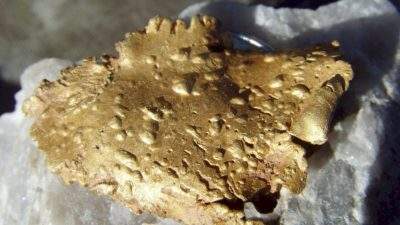
The MobileMT survey marks a major step in advancing exploration on these properties, which are prospective for both epithermal and porphyry styles of mineralization.
Adventus’ Vice President Exploration, Jason Dunning, comments: “With the start of the airborne MobileMT geophysical survey, both Adventus and Salazar are extremely excited that MobileMT will greatly enhance drill hole targeting by defining high-priority targets for follow-up in early 2019. This is the first time there will be a deep penetrating, uniform dataset for Pijilí and Santiago projects that will allow us to more accurately visualize the geological and structural framework in 3D to define potentially prospective host rocks for intrusion-related mineralization. Our technical team is working closely with our contractor in the field and we are eagerly awaiting the survey’s completion.”
The Pijilí and Santiago survey blocks were designed to be flown in a systematic manner off a detailed grid pattern to ensure full coverage and depth penetration. A 150-metre line spacing has been planned for both projects that results in a budgeted total of approximately 1,830-line kilometres. The airborne MobileMT geophysical survey is expected to be completed before year-end.
Pijilí Project Highlights
The Pijilí Project consists of three concessions totalling 3,246 hectares and is located in the province of Azuay, approximately 150 km from the major port city of Guayaquil. Mineral potential for Pijilí Project includes an untested epithermal gold-silver target, however, initial geological review is suggestive that there is a broader, larger scale porphyry target present.
The Pijilí Project has never been explored with modern exploration techniques, such as geophysics, nor has there been any systematic geological mapping, geochemical sampling, trenching and/or drilling undertaken. Small-scale, legally permitted artisanal mining operations adjacent to the property are following precious metal-bearing structures via several small open pits and underground tunnels. It is also important to note the presence of secondary copper mineralization that is visible along the walls of the small open pits. Salazar staff have noted copper sulphide-bearing (chalcopyrite) veins in a valley bottom at the confluence of major creeks that also require additional follow-up.
Santiago Project Highlights
The Santiago Project consists of a single concession that encompasses 2,350 hectares and is currently 100%-owned by Salazar. It is located in a geological setting similar to the nearby Loma Larga deposit owned by INV Metals Inc. and is considered prospective for epithermal gold and silver and porphyry copper gold deposits. It features three large, surficial geochemistry anomalies for gold, copper, and zinc. Numerous vein occurrences have been identified on the property thus far, which have yielded good chip sampling results for both gold and silver.
There have also been historically modest drilling campaigns by two operators on the property, including Newmont Mining Corporation that reported wide drill intercepts for copper-gold from surface. Unfortunately, these historic drill results cannot be verified, as the drill core is unavailable. Additional work, including drilling, will be required to validate these reported historical drill results.
Airborne MobileMT System Overview
The airborne MobileMT geophysical survey is being managed by MPX Geophysics Ltd. (Canada-based) who is employing an airborne geophysical system designed and built by Expert Geophysics Limited (Canada-based). MobileMT is the most advanced generation of airborne AFMAG technologies that uses naturally occurring electromagnetic fields in the frequency range between 25 Hz and 20,000 Hz.
The technology behind MobileMT is the product of the latest advances in electronics, airborne system design, and sophisticated signal processing techniques. An aerodynamic, light-weight, airborne bird is towed by a helicopter with the airborne bird measuring variations of the magnetic field, while a ground station measures variation of the electric field. The ratio of the magnetic and electric field magnitudes in both in-phase and out-of-phase components provides analytic parameters in selected bands of frequencies. The advanced noise processing technique of both electronic and signal processing levels ensures high data quality even for low natural EM fields. A cesium-vapour magnetometer is used for the total magnetic field recording.
Source: Company Press Release






